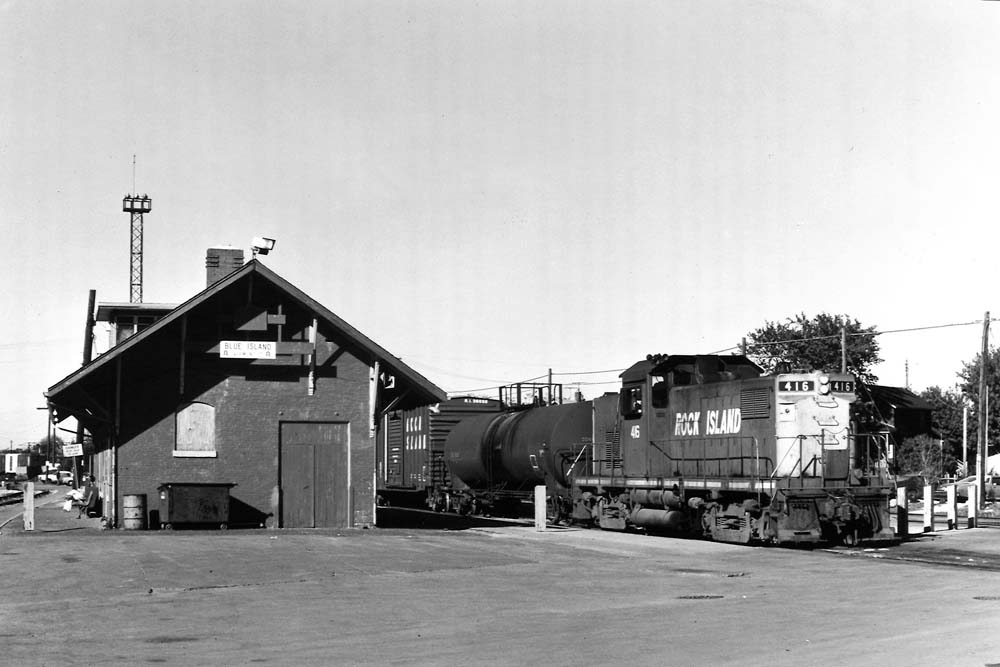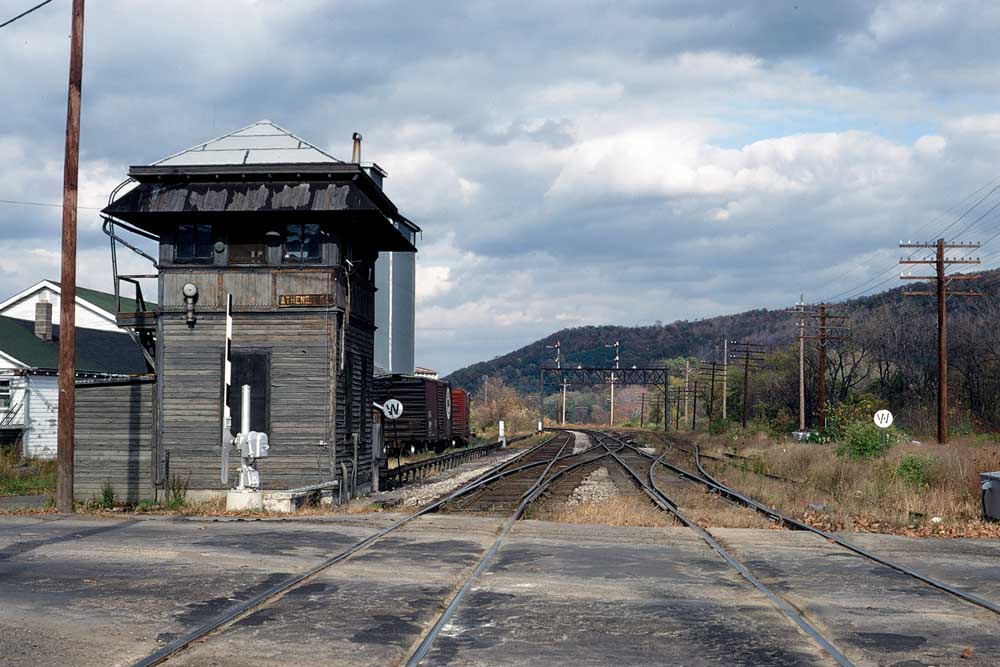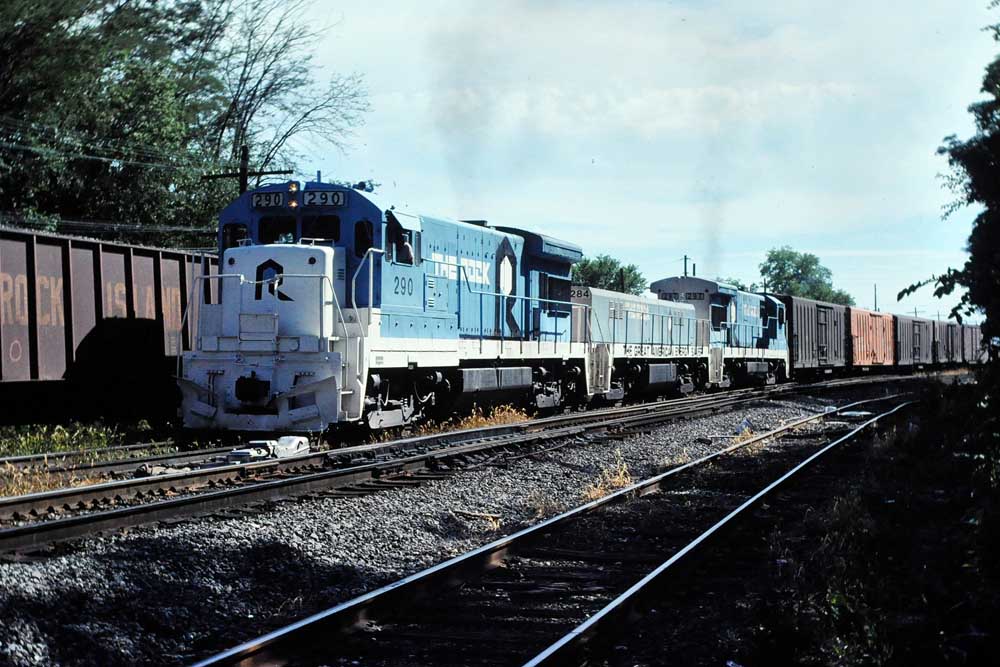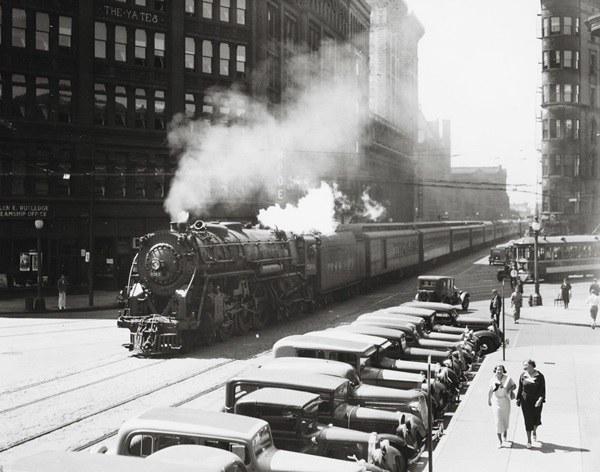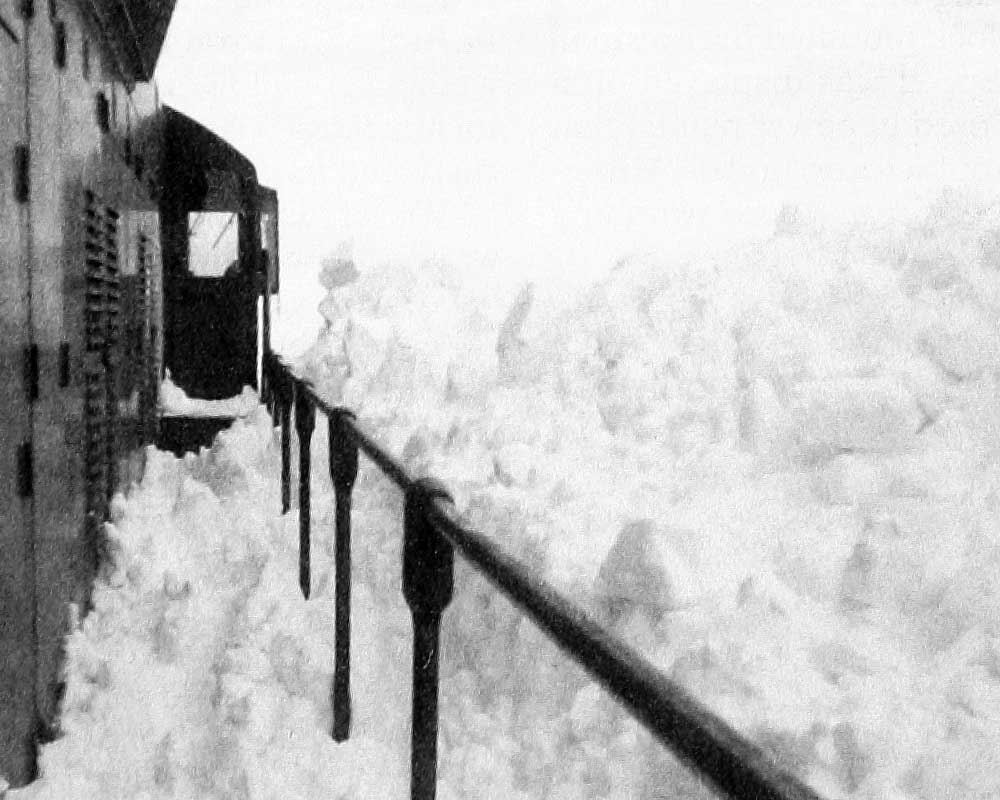
The year was 1978, and I was an assistant roadmaster for the Burlington Northern out of Lincoln, Neb. Through February, the winter weather had been mild and dry, and I’d mostly been overseeing repairs to several sets of outfit cars used to house production gang workers. On the first Tuesday of March, however, a fierce blizzard hit central and eastern Nebraska, with winds of 40 mph driving wet, heavy snow that accumulated from 10 to 20 inches and piled into 20-foot drifts in some areas.
Every snowplow on the Nebraska Division was put into service to clear branch lines, and every assistant roadmaster was assigned to a snowplow work train. I considered myself lucky to be assigned to the Hildreth line, because it was in relatively good condition. The timetable speed for it was 25 mph, but much of it was good for 50; only a few short stretches had 10 mph slow orders, and they weren’t in areas known for drifting. I figured it would be an easy trip.
The Hildreth line originates at Fairmont (halfway from Lincoln to Hastings on the main line to Denver), heads south through Geneva to Strang Junction, then goes west through Blue Hill to the end of track at Hildreth, a total of 98 miles. I met the work train at Fairmont, where we inspected the old wedge snowplow. It was in good condition except for the turnbuckles — used to raise and lower the plow — which were rusty and hard to turn.
We left Fairmont with the plow, a GP30, a GP9, and a waycar (Chicago, Burlington, & Quincy lingo for caboose). More luck: it was rare to have two engines for plow duty; they were both just out of Lincoln shop and operating OK. We made good time to Strang Junction, where the conductor signed the train register and we headed west. The train crew had been on duty for 8 hours, and we expected to make Blue Hill before their 12 hours were up, since we did not anticipate any serious drifts before Blue Hill.
We were wrong. Three miles west of Edgar, the track curved southwest through a cut a quarter mile long and 15 to 20 feet deep. The snow had drifted level across the cut at its midpoint for 200 yards; we noticed it a half-mile away. We were traveling 25 mph. The engineer widened the throttle to position 8 and said, “Now the fun begins.” Besides the engineer and me, the head brakeman and the senior man from the Blue Hill section (track gang) were in the cab. We looked at each other and smiled, because we knew we were about to put on a show for anyone who might be watching from the nearby highway.
We hit the drift at nearly 40 mph and lost all visibility; the snow started streaming into every opening in the doors and windows. A third of the way through, our speed started dropping quickly; halfway through, every warning bell and light was going off. Then the waycar came uncoupled, which dumped the air. We were dead in the (frozen) water. What I said is not printable.
In Nebraska, it’s not just snow that drifts, but “snirt.” The wind picks up the soil from the plowed fields and mixes it with snow, and the resulting snirt resembles cement more than snow. We all knew we had a lot of work to do.
We had to crawl out the cab through the brakeman’s side window. The crawl was up, not down. The rest of the Blue Hill section — three men — walked in from the highway crossing with snow shovels. When they got to the train they looked at me like a little boy would look at someone who just ran over his dog.
The snow, or snirt, was packed around the brake riggings, fuel tanks, air lines, journal boxes, and anywhere else air would normally be. It was solid under every inch of the train. The four sectionmen and I dug in for five hours before we called it a night. Meantime, the engineer discovered the second unit had died, and he couldn’t restart it. He drained it and requested the dispatcher send mechanics from Lincoln first thing in the morning. He was told no one was available — we’d have to make do with one unit.
I called the chief dispatcher and told him there was no way we’d get through to Hildreth with one engine before May. After several minutes of arguing, he agreed to send another engine down from Fairmont the next morning. While I was arguing with him, the engineer called the Hastings roundhouse and talked the one mechanic there into meeting us at Blue Hill to get our dead GP9 running.
At 8 a.m. the sectionmen and I resumed digging. By noon the promised engine arrived, and we were ready to back out of the drift. Both working units were strained to the maximum to drag us free. Even though we’d dug for nine hours, there was still tons of snirt packed under the train. Finally, we broke loose and were ready to start west again.
Over 50 yards of that 15-foot drift remained to plow, so we were not out of this yet. We backed up the highway crossing, wired all coupler handles down so we didn’t lose the waycar again, and took off. We hit the drift at 50 and didn’t even get slowed down.
This was not the end of our troubles, though. At the west elevator track switch at Deweese, the plow caught the rail behind the frog, derailing the plow and tearing out the straight rail from the guard rail to the switch points. Luckily the lead unit did not derail, thanks to the alertness of our engineer. I had just killed the section gang’s other dog — we spent the rest of the afternoon rerailing the plow and repairing the switch. We finally tied up at Blue Hill at midnight.
The sun finally started warming things up on our third day; until then, the temperature hadn’t climbed above 20, and that first night of digging, we’d been working in 10-below temperatures. Had our luck changed?
The Hastings mechanic showed up and got our original second engine running, now we had three, unheard of for plow duty. We left Blue Hill at 10 a.m. with more horsepower than anyone thought we’d need. The remainder of the line was known for heavy drifting, though, with several cuts over 30 feet deep and a half mile long. Five miles west of Blue Hill was the longest, deepest cut on the whole line. The old sectionman riding with us warned that this one would surely get us. He even suggested calling Lincoln and requesting the rotary plow. I knew better-the rotary was reserved for the O’Neill line, west into northeastern Nebraska out of Sioux City, Iowa, where it really snowed!
We were running at 30 when the cut came into view, and it was just as the sectionman said, more than we could handle. The drift was level across the cut and ran at least a half mile. Assistant roadmasters are not known for their brains, however, and I ordered the engineer to proceed. On approaching it, I could see this one started out only covering the north half of the track for 20 yards. I told the engineer to slow down and ease into it slowly. I figured if we blasted into it, we’d end up on the south side of the right of way.
After squaring up the drift, we backed up three quarters of a mile, stopped, and checked all couplers and air hoses. I told the hogger to give it all he had and grabbed a handhold. The old sectionman sat down next to me in the fireman’s seat, and the head brakeman went back to the second unit. The engineer looked at me, and said, “You’re the craziest s.o.b. on the BN.” I told him, “No, you are,” because he was actually listening to me.
We hit the drift at over 60 mph with all three units at full throttle. Again we couldn’t see a thing except white. Halfway through, we’d slowed to 25 when we noticed an open spot in the drift. The engineer hit the brakes as hard as he could without dynamiting the train and had us in reverse before we stopped. He was an excellent engineer. We repeated the whole process, and this time we made it through. When we finally saw daylight on the second shot, we were down to 10 mph.
The rest of the trip was uneventful. The whole threeday experience was my most exciting one on the railroad. When I look back on it, I realize we took more risk than we should have, but we didn’t do anything different from what probably most every railroader has done in the past, or will do again.
If nothing else, this episode showed how hard sectionmen work, even under extreme conditions. Their work should not be taken for granted.






